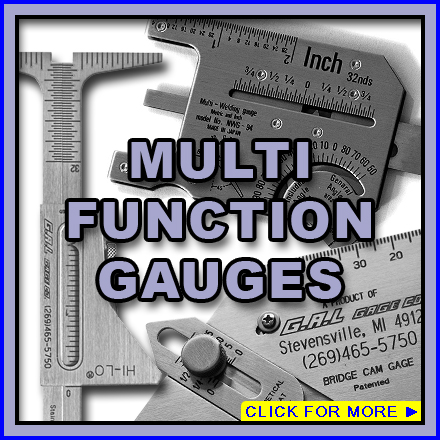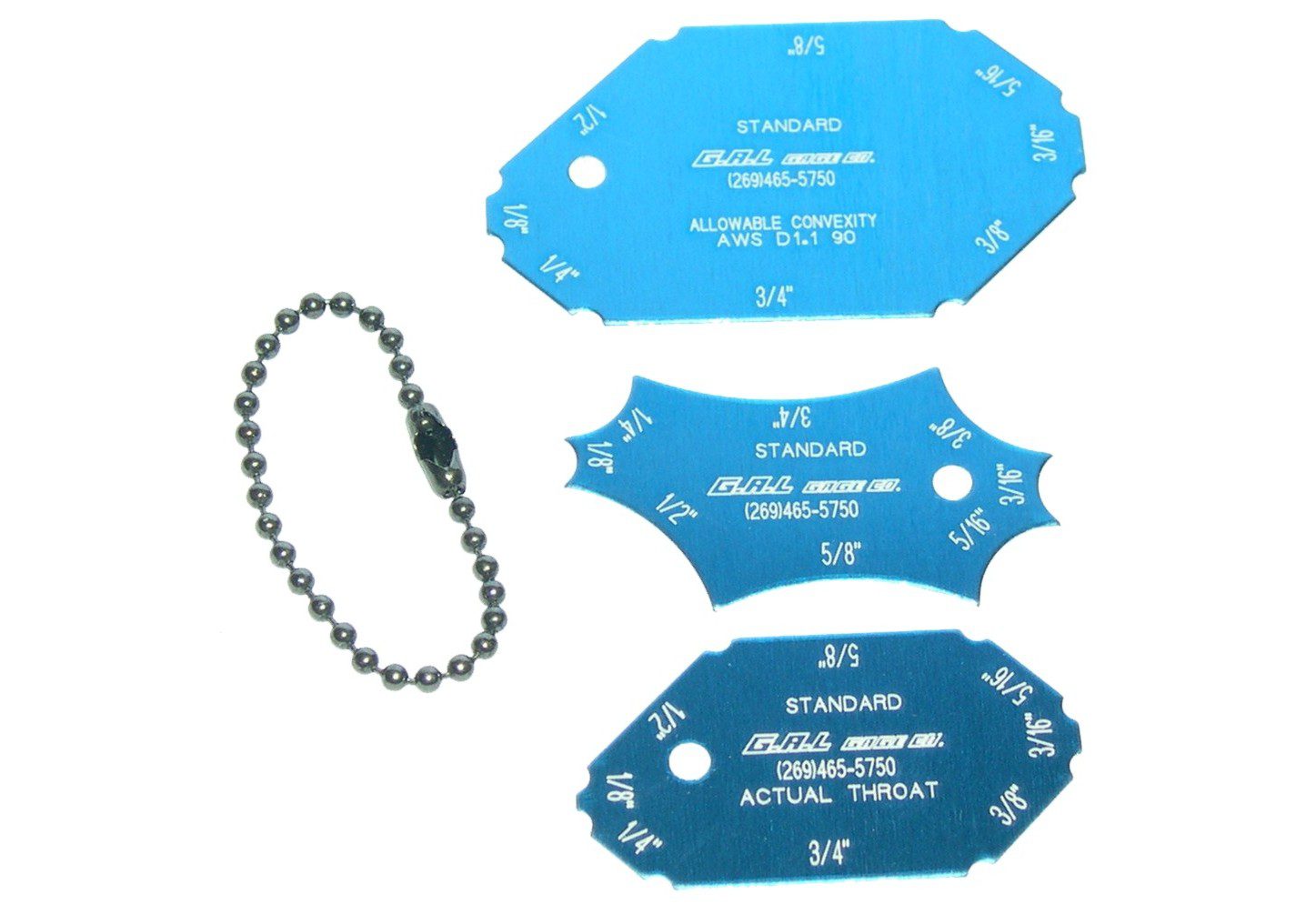Ingenious Approaches to Fillet Weld Examination and Testing: Enhancing Weld Quality and Compliance Specifications
In the world of welding, the high quality and honesty of fillet welds play a vital function in ensuring the structural stability and integrity of various commercial elements. With the continuous drive for improved performance and conformity with strict standards, the exploration of ingenious techniques to fillet weld examination and testing has come to be critical. As sectors progress, the conventional techniques might no more suffice in fulfilling the demands of modern-day welding applications (Gauge Fillet Weld). By accepting cutting-edge technologies and approaches, a new perspective of opportunities arises in the world of weld high quality evaluation and adherence to conformity standards.
Advanced Non-Destructive Testing Approaches
Making use of modern innovations, progressed non-destructive testing methods play a crucial duty in guaranteeing the stability and high quality of fillet welds. These methods, such as phased selection ultrasonic testing (PAUT) and magnetic bit testing (MPT), offer detailed understandings right into the weld's inner framework without creating any type of damages to the material. PAUT, for example, makes use of numerous ultrasonic aspects to examine the weld from numerous angles, providing a comprehensive visualization of possible defects like lack of combination or splits.
Likewise, MPT is reliable in identifying surface-breaking defects by applying an electromagnetic field and iron particles to the weld area. This technique is specifically valuable for determining interruptions that might endanger the weld's strength. By employing these sophisticated non-destructive screening methods, weld inspectors can precisely examine the top quality of fillet welds, ensuring compliance with market standards and guidelines. The capability to detect flaws early not only enhances weld quality but likewise avoids expensive rework or failures in structural honesty, underlining the significance of these ingenious screening strategies in welding evaluations.
Robotics and Automation in Inspection

The integration of robotics and automation has reinvented the examination procedure for fillet welds, boosting performance and precision in high quality assessment. Robotics supply exact control and repeatability in examining welds, making certain regular and reliable outcomes. Automated systems can be set to comply with specific inspection paths, making sure extensive coverage of welds and lowering the danger of human mistake.
Robot assessment systems furnished with advanced sensing units can identify and determine weld features with high accuracy, giving comprehensive information for analysis. These systems can determine flaws such as cracks, lack of fusion, and porosity, making it possible for prompt restorative activities to be taken. Additionally, robotics and automation permit real-time data collection and analysis, supplying instant feedback to drivers and helping with fast decision-making procedures.
Furthermore, the usage of robotics and automation in fillet weld evaluation enhances general productivity by minimizing assessment times and boosting assessment throughput. By enhancing the inspection procedure, producers can ensure weld high quality and compliance criteria are fulfilled successfully, ultimately bring about cost savings and improved product top quality.
Using Artificial Knowledge for Evaluation
Fabricated knowledge plays a critical duty in boosting the performance and accuracy of evaluation in fillet weld evaluation procedures. AI algorithms can rapidly process vast quantities of data from weld inspections, finding problems or disparities that may be testing to determine with the nude eye.
Moreover, AI systems can discover from past assessment data, consistently enhancing their capability to recognize prospective problems and variances in fillet welds. This adaptive discovering ability improves the total quality assurance process, minimizing the likelihood of human mistake and making sure that welds satisfy the called for criteria. By incorporating expert system into fillet weld analysis, sectors can attain higher degrees of performance, uniformity, and conformity in their evaluation techniques.
Portable Devices for On-Site Examination
Enhancing field assessment performance, the fostering of portable devices changes on-site evaluation procedures for fillet welds. These devices offer versatility and comfort, allowing assessors to conduct thorough assessments in different locations, including tough or remote environments. Mobile tools such click for info as ultrasonic screening gadgets, magnetic particle assessment devices, and electronic radiography systems provide real-time data and high-resolution imaging capacities, allowing quick decision-making and instant feedback on weld top quality.
One considerable advantage of portable tools is their capacity to enhance evaluation treatments, decreasing downtime and improving general productivity - Gauge Fillet Weld. Inspectors can quickly deliver these devices to different work websites, getting rid of the requirement for delivering heavy equipment or elements to off-site facilities. Additionally, the transportability of these tools advertises cost-effectiveness by minimizing transport expenditures and speeding up inspection timelines
Furthermore, the usage of portable devices for on-site inspection promotes proactive quality assurance procedures, as assessors can immediately determine and attend to any kind of possible welding flaws or disparities. By integrating these innovative innovations into on-site inspection techniques, welding experts can make certain compliance with sector criteria and enhance weld top quality, eventually leading to enhanced structural integrity and security in numerous welding applications.
Combination of Information Monitoring Equipment
Having actually optimized on-site evaluation procedures via the application of mobile tools, the next phase includes the seamless assimilation of information administration systems to additionally improve effectiveness and data analysis capacities in fillet weld inspection and screening. By integrating information monitoring systems into the evaluation process, companies can enhance data collection, storage space, and analysis. This integration allows for real-time monitoring of weld high quality, instant recognition of defects, and prompt decision-making to correct any problems that may occur throughout the assessment process.
The assimilation of data administration systems makes it possible for smooth interaction in between different stakeholders involved in the examination process, cultivating partnership and enhancing overall top quality control procedures. Ultimately, the assimilation of information management systems offers to elevate the requirements of fillet weld examination and screening, making sure conformity with market policies and view it now enhancing weld top quality.
Final Thought
Finally, innovative techniques to fillet weld evaluation and screening have significantly enhanced weld high quality and conformity criteria. Advanced non-destructive testing techniques, robotics, automation, fabricated intelligence, portable tools, and information administration systems have revolutionized the means weld inspections are performed. By using these innovations, industries can make certain that welds fulfill the called for quality standards and regulations, ultimately improving total effectiveness and safety and security in welding procedures.

Having enhanced on-site inspection procedures with the usage of portable tools, the following phase includes the seamless integration of information administration systems to additionally enhance efficiency and data analysis capabilities in fillet weld evaluation and screening. Ultimately, the combination of data management systems serves to elevate the standards of fillet weld inspection and testing, making sure conformity with sector policies and improving weld top quality.
